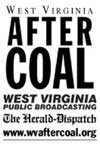Changing Tides, Aberdeen, WA 1997
Partners:
The Daily World of Aberdeen
Channel 20
TCI Cablevision
Political, economic and environmental forces were changing life on the Southern Olympic Peninsula and its paper decided to help citizens join together to meet the resulting challenges. Partnering with cable channel 20 – the only station in the county – the Daily World launched “Changing Tides” in April 1997, a two-year effort to chart a new course for the region.
The series debuted in the paper’s annual “Perspectives” edition, with nearly 100 pages in six inside sections on the region’s logging and fishing history and how that history related to present day issues, when environmental laws had reduced opportunities in those areas. Then the paper engaged citizens in discussing the changes and their impact through a series of three focus groups with 30 people chosen randomly from three separate areas of the region. The paper covered the focus-group discussions in front-page stories in August 1997 and also invited readers to add their input to the citizens’ comments. The paper printed responses in a Sunday feature, “It’s Your Call,” which became a regular weekly feature. The paper also used the input to develop questions for a telephone poll of 400 people. Poll results were published in December and were discussed at community forums. A final survey of 130 people recognized as community leaders – elected officials, educators, union leaders and others – was conducted by mail in March 1998 and showed the officials struggling to arrive at a common vision for the region’s future. Read more





